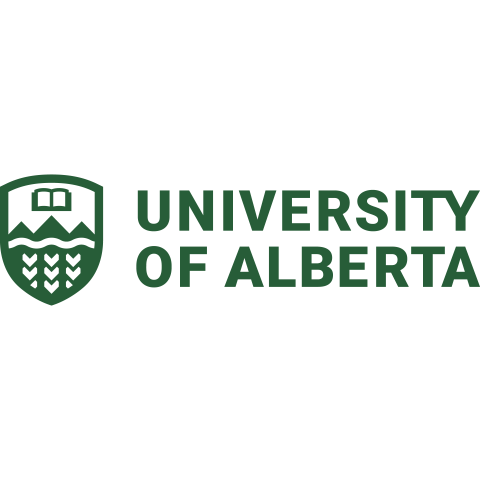
Restructuring a university, part one
I knew it would be tough, given that we were at the confluence of multiple negative forces, with a global pandemic, a pronounced economic downturn and nothing but uncertainty ahead. But I was ready to take a new step in academic leadership – at my parents’ alma mater, no less.
Assuming the role of president and vice-chancellor of the University of Alberta (U of A) in July 2020, I had been looking forward to returning to the Canadian province where I was raised after studying in Toronto, Paris and New York, and spending three terms as dean of the Faculty of Law at Queen’s University. I had taken bold moves at Queen’s Law, including expanding student enrolment by 25 per cent and increasing the faculty complement by another 25 per cent, while maintaining high admissions standards and graduate placement rates. We also developed Canada’s first online undergraduate law programme ever offered by a faculty of law, which proved to be an instant success, enrolling thousands of students and generating major new revenue for the school. I was proud of what we had achieved.
Yet the journey back was proving to be anything but smooth.
- Towards 2035: a future view of university education
- The art of fostering collegiality
- What is responsible leadership in tertiary education?
Alberta was still recovering from a drastic economic downturn after a collapse of energy prices in 2015. The government was determined to right the books. A 2019 independent panel had reviewed the province’s finances and concluded that the province was spending significantly more per person than its peers in Ontario, Quebec and British Columbia on a range of public services – including the post-secondary system. Every area of the public sector was under the microscope. As a result, the U of A was facing a C$222 million (£133 million) provincial funding cut, one third of our provincial funding. While we teach only 25 per cent of the post-secondary students in Alberta, the government imposed 45 per cent of the post-secondary cuts on the U of A.
As if that wasn’t enough, the entire globe was grappling with the Covid-19 pandemic. Like most other institutions, the U of A had followed health protocols and taken pains to observe physical distancing; staff had been working from home, in-person classes had been cancelled and our students were cast into the realm of remote learning.
It amounted to a perfect storm.
I was also aware of the broader pressures on the university. Students today expect more from their post-secondary journeys, including more personalised experiences, enhanced integration of digital technologies, greater flexibility in courses and programmes, more work-integrated learning opportunities and – above all – degrees that position them for success.
Funders of all stripes – including governments, industry partners and private donors – are also demanding more, insisting universities make the most of every dollar. Employers are joining this chorus, especially amid labour market constraints. If tax dollars are going to universities, they reason, then the graduates of those universities ought to have the critical skills required for the jobs of today and tomorrow.
Post-Covid, the backdrop also includes inflation, rising costs of living and an ageing population driving up healthcare costs and stress on the public purse.
Responding to these pressures involves more than a public relations exercise. It calls for an overhaul of how Canada’s major universities are organised and managed, and the outcomes they strive to achieve.
For most institutions, this has been a conversation at the margins – behind closed doors, in hushed tones or as a long-term think piece, the kind of thing you expect to see in a well-reasoned policy report that goes nowhere.
For the U of A, however, it was a far more real – and far more existential – conversation. The impetus was at first financial: a C$222 million cut that had to be reconciled in 24 months. After a four-year freeze, the government announced tuition fee increases that would fill almost half this hole, raising our fees from among the lowest in Canada to about the Canadian average. We also had plans to generate more revenue through increasing our enrolment. But we had to find a solution for the remainder, a net budget reduction of more than C$100 million. It begat a comprehensive overhaul of a size and scale never undertaken by a major university in Canada.
History, siloes and inertia
Founded in 1908, the U of A is the province’s flagship university, with more than 44,000 learners. Yet in 2020, the accretion of 112 years of history, choices and inertia was showing. Despite its substantial size and research output, the university was arguably punching below its weight. Institutions with much less research funding, such as King’s College London and the Australian National University, were consistently ranking in the top 80 universities in the world; with a level of research funding similar to UoA, the University of Manchester was placing in the top 50. U of A, meanwhile, had slipped out of the top 100.
Other data pointed to challenges as well. UniForum, a consultancy programme used to inform the management of universities worldwide, found that the U of A’s administrative costs were 38 per cent higher than those predicted for a university of our size and research intensity. We were spending more than C$100 million more a year on administrative costs than the predicted average. Much of this was due to how services had been established over time, with many siloed and widely distributed across departments. Instead of working as one university, the institution essentially presented itself as a federation of highly decentralised schools. It was no one’s fault. In fact, most Canadian universities operated in this manner. But in a world where interdisciplinary collaboration was now part of the basic table stakes, it was a barrier. It had also become completely unaffordable.
The news wasn’t all bad – the university’s foundation remained solid. The U of A was still making major research accomplishments; it had world-class faculty, and applications from prospective students were at historic highs and growing. The 2020 Nobel Prize in Medicine for our colleague Michael Houghton’s work in virology was a milestone. Retaining and building upon these strengths was essential and could lead to incredible opportunities for the university.
However, the institution wasn’t going to hold steady amid the confluence of pressures it was facing. Something was going to give.
The timing and circumstances were not of our choosing, but we had choices. For instance, we could have dramatically reduced our size, eliminated entire faculties or made random cuts across the institution to balance our books.
Instead, it was time to bring the conversation about post-secondary modernisation out of the margins and into the mainstream. Why not make the changes that some critics had been saying were long overdue for all universities? Why not turn this financial crisis into an opportunity for strategic transformation? On this front, the U of A would once again be the place of groundbreaking events. It was going to demonstrate the new paradigm for post-secondary education in Canada: the University of Alberta for Tomorrow (UAT).
It was clear that UAT was going to be transformative. It would be painful at times and a dramatic shift unlike any the institution had experienced. And there was no time to waste.
The goals, too, were clear: guided by evidence and consultation, reconcile the financial picture and, while doing so, reposition the U of A for longer-term success and relevance.
However, the devil was in the detail. The UniForum data and other pieces of evidence would be informative here. So, too, would be the wisdom and perspectives of faculty, staff and students – almost all of whom had been at the university longer than I had. They knew how the place ticked and could offer insights on both operational irritants and opportunities for improvement.
From the outset, we aimed to advance a unified vision for the U of A: working together as one university, our core mission was to build one of the world’s great universities for the public good.
Click here for “Restructuring a university, part two”.
Bill Flanagan is the president and vice-chancellor of the University of Alberta.
If you found this interesting and want advice and insight from academics and university staff delivered direct to your inbox each week, sign up for the Campus newsletter.




